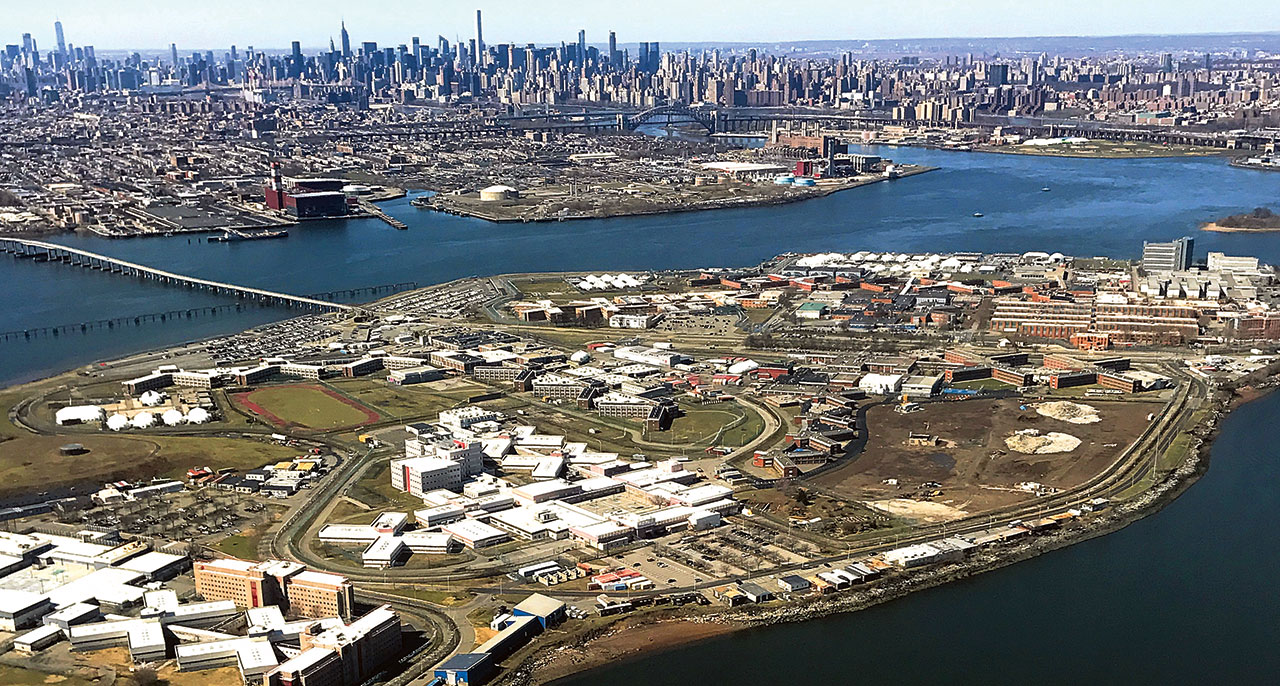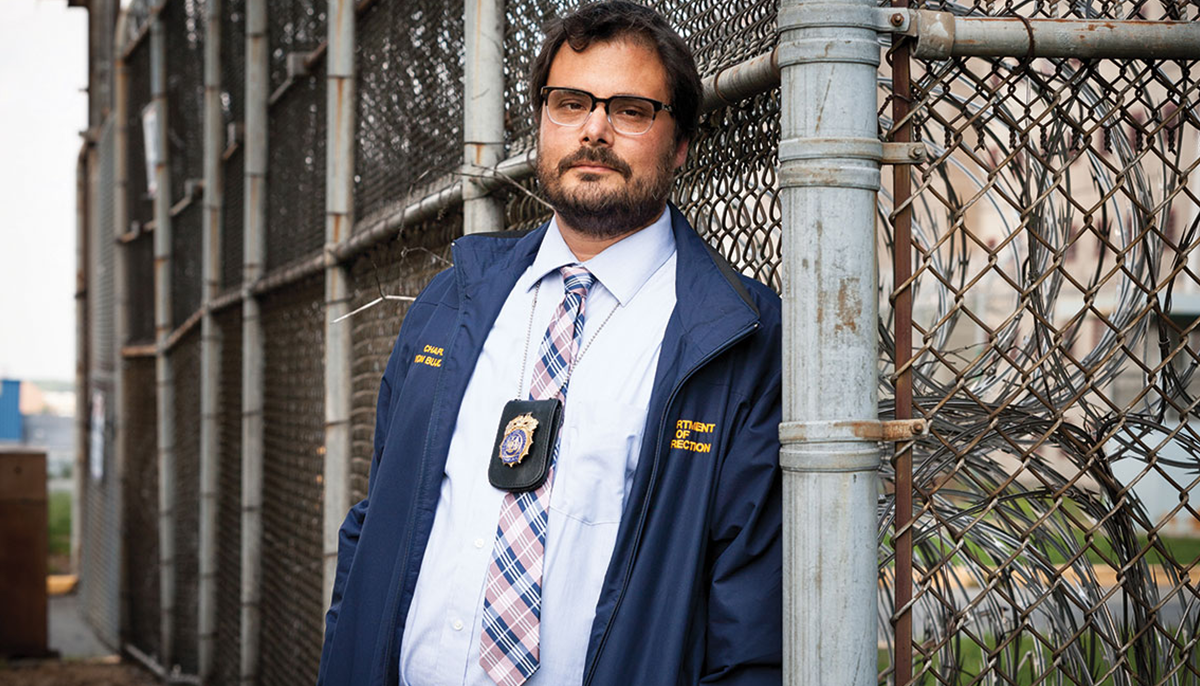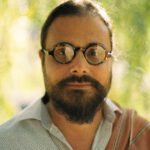To say that Rikers Island is an intense place is a gross understatement. Home to seven separate jail facilities, Rikers could be thought of as part hell realm and part emergency mental health clinic. Holding thousands of New York City’s most traumatized, underresourced, and forgotten residents, it serves as a grotesque concrete and metal witness to an unfathomable amount of human pain and suffering.
I first stepped foot on Rikers in the summer of 2013 as a volunteer. After a few years, I became the first chaplain dedicated to the spiritual needs of Rikers Island staff. My background as a Buddhist teacher and trained Tibetan lama made my appointment even more unique. Later, I became executive director of the Chaplaincy and Staff Wellness division of the New York City Department of Correction, and my congregation became the city’s ten thousand correction officers. I began to understand the impact of working in correctional facilities, and the complex intersectionality that makes places like Rikers different from other correctional facilities in the country.
When I could make things better, it became my duty to try to do so.
A few months after I began my new role, correction officer Alastasia Bryant was murdered by her boyfriend. Officer Bryant’s boyfriend was a Crip gang member and had put out a hit on her because she wanted the car that she’d bought him back. The call came late at night. I’d never responded to a murder before.
First, I went to Rikers to help her colleagues and then to the family home to support her family in their inconceivable and irreparable loss. I sat with them in their brokenness and rage. Some of her family wanted revenge—to get guns and go after the boyfriend, who was still at large. It was a tense time as there were reports the boyfriend had been sighted in the area. The events around this tragic murder and holding space for everyone impacted led me to understand I was entering into a world that very few outside Rikers could possibly grasp.
Much of my role was emergency response. I still remember watching in shock as assaults-on-staff notifications came through one after another. I couldn’t believe the violence and fiery pain experienced by everyone stuck within the facilities: suffering broken noses, orbital fractures, stab wounds, fractured hands, fractured ribs, boxer’s cuts, chemical spray exposure, fractured spines and skulls, being splashed with urine and feces, and sexual assault. I was witness to rage, depression, substance abuse, mental illness, PTSD, physical violence, and in a few cases open suicidal ideation.
I’m not afraid of challenging circumstances. My work in hospice prior to Rikers provided me with a high level of comfort working with the dying and bereaved. At Rikers I became the primary contact when there was a death of staff or a detainee. I responded to nearly every staff death and facilitated the notification of next of kin for every death of a person in our custody. High-quality response became a form of spiritual practice for me: doing the right thing, responding in the most compassionate and expeditious way I could, supporting not only family and colleagues but the entire agency with every tragic event that happened. When I could make things better, it became my duty to try to do so.

At Rikers, I learned so much about myself and my dharma practice. I learned that sometimes the most profound—and hardest—part of Buddhist practice is just showing up. Whether it be on a meditation cushion or in the mundane moments of our lives, showing up and being witness to what is arising is a big part of the work. It also felt important to model the Buddhist ethical imperative as an example of a third way—an alternative to the hard-and-fast binary that defines the criminal justice system.
In my role, I frequently quoted the Indian Buddhist master Shantideva in my remarks at graduation ceremonies for new recruits and at promotion ceremonies. As he wrote in The Way of the Bodhisattva:
May I become at all times, both now and forever, a protector of those without protection, a guide for those who have lost their way, a ship for those with oceans to cross, a bridge for those with rivers to cross, a sanctuary for those in danger, a lamp for those without light, a place of refuge for those who lack shelter, and a servant to all in need, for as long as space endures, and for as long as living beings remain. Until then may I, too, abide to dispel the misery of the world.
In a culture as dominated by Abrahamic values as American culture is, especially with respect to the concepts that inform “criminal justice” and the “correctional” system, many Buddhist chaplains choose to remain on the periphery rather than work alongside those who remain centered on theism. But I don’t think we can manifest any alternatives to these systems without openly offering models inspired by something other than the prevailing Abrahamic headwinds of the day.
In this regard, I have come to find myself skeptical of a trend in Buddhist chaplaincy to perform in the same way that chaplains of various Christian denominations do. It’s okay to be different, it’s okay to be upfront that we don’t believe in a creator God, and we certainly don’t have to shed our fierceness and passion for the way buddhadharma shows up through us as an expression of a powerful wisdom tradition. It’s okay to disrupt through the presence of difference.
Buddhist chaplains don’t need to be apologists for their rich faith tradition. We need to bring the wealth of our tradition to those stuck in such heavily binary thinking. The nonduality of Buddhist practice is a gift to humanity. There is tremendous benefit in relaxing into an experience of flow and open being that offers an alternative to the narrowness and tight constriction arising in so many ways when people are stuck between tight binaries. In times like these, the work of embodied dharma practice is essential.
For example, I used my experiences on Rikers as a ground for familiarizing myself with the joyful play of the following words of Tilopa, which showed me how to skillfully work in some of the hardest and most painful of places:
To transcend the apprehended and the apprehender is the king of views.
To be without distraction is the king of meditations.
To be free of effort is the king
of conduct.
To be free of hope and fear is the king of results.
In my work as a chaplain, I experienced great beauty in learning that dharma practice has the potential for profound healing. For example, the Vajrayana practices of Mahamudra and Ati Yoga offer the possibility of deep restoration and internal healing of the friction created by the dualistic points of reference that Western culture seems to be predicated upon. I learned that embodied practice heals, nurtures, and enriches as much as it disrupts, challenges, and provokes. This is also true of tonglen, Medicine Buddha practice, and many other meditations. There is so much power in this type of healing. Let us celebrate this! Dharma is young in the West, and there remain so many possibilities for bringing benefit to those around us.
A colleague at Rikers told me that she didn’t know how I held everything that I’d seen—all of the death, sadness, pain, desperation, and vast brokenness—but she was grateful for everything I was able to do. Certainly, the job took an intense toll on my emotional and physical health. I was stunned, even regretful, about what I’d become accustomed to seeing, hearing, and finding a home in.
My colleague then said something that struck me with a truth I was unprepared for. She said, “You and I make this place worse. We make it worse because we try to make it work. Maybe it shouldn’t. Maybe these systems should just be left to collapse so that a better alternative can come into existence.”
While this wasn’t necessarily the type of thing one wants to hear while trying to make sense of years of hard service, I think she was right. Her comment gave me permission to let go of working in a way that keeps a broken system going. At the end of 2021, I left my position.
Trying to bring an ethos of compassionate response to the complex intersectionality of suffering at Rikers Island made me a prison abolitionist. I cannot in good conscience support the existence of prisons and jails. No one should be caged, and the magnitude of harm from centuries of penal enforcement has created unfathomable damage to communities of black and brown people, immigrants, the underresourced and underrepresented, and those suffering from the complexities of substance abuse, mental illness, and homelessness.
I hope one day our culture can manifest systems that heal rather than systems that create unbearable harm, violence, and systemic oppression—not just in correctional systems, but everywhere. Having had the unique opportunity to watch a correctional agency from the inside not be able to effectively address the current expression of all of these traumas, while also living in a nation that seems to look away rather than address the root causes of these deep harms, my sense of hopefulness is often challenged. My time at Rikers Island was heartbreaking and painful, nothing less than a veritable five-year retreat in a hell realm, but my faith compels me to live up to Shantideva’s profound exhortation and Tilopa’s demonstration of the view. I will not forget my vow to keep showing up, and I will continue to manifest the activity of nonduality as I do.

